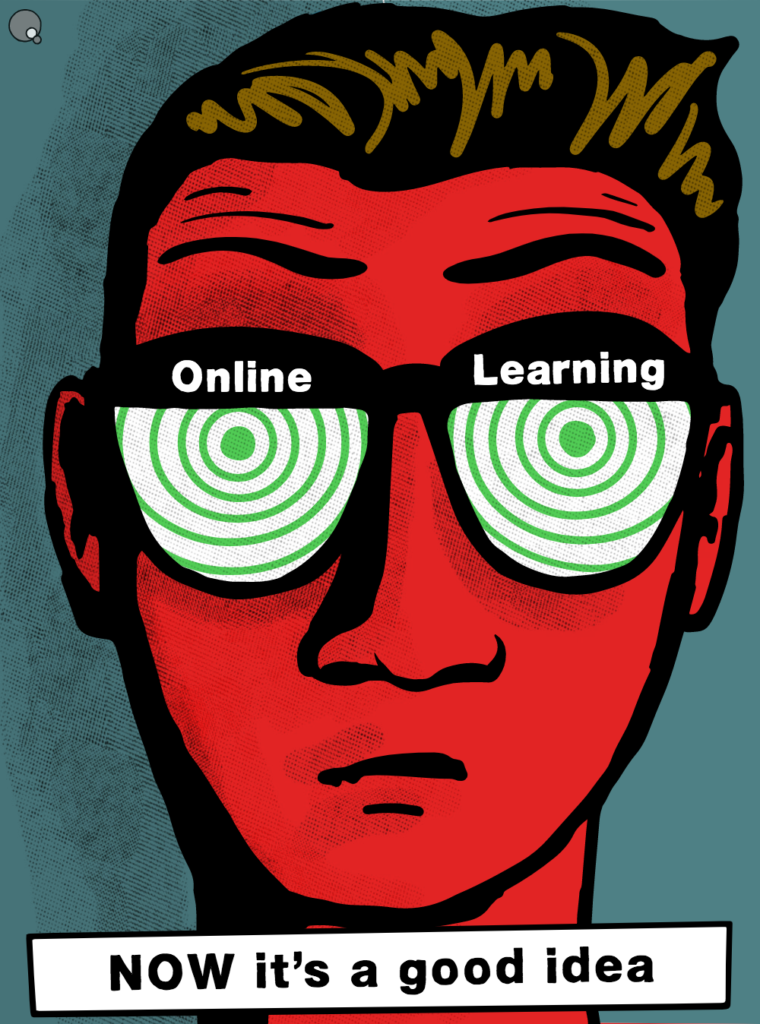Higher Education’s COVID-19 Online Pivot: Institutions
The outbreak of COVID-19 has seen many universities closing campuses and shifting learning online. It’s unprecedented and suddenly puts ed tech front and center in a way it hasn’t been before. For those of us who have been doing online learning or distance ed for a while it can seem a bit irritating to have been seen as second class for so long and then suddenly deemed worthy of interest. So I tweeted over the weekend:
It’s interesting seeing all the unis that disparaged distance ed as not proper suddenly being converted to the benefits of online education
— Martin Weller (@mweller) March 7, 2020
It was kinda snarky, but I’ll come to it later. I saw later that Lee Skallerup Bessette tweeted this, which I think is a fairer response:
So I’m seeing a lot of “oh so now online learning is where it’s at?” tweets (some of which I’ve rt’ed). Look, I get it, it’s frustrating. But what if, and hear me out, this is our chance?
— Dr. Lee Skallerup Bessette (@readywriting) March 8, 2020
So, in the interest of pulling together, I’m splitting this post into two parts, the (possibly) useful bit, and the moany bit. You can take your pick between them.

The (possibly) useful bit
It will be tough for lots of academics to teach online if they have little or no experience of it. Without the necessary support or development required in such a small time frame it is likely to be frustrating and full of potential errors, which makes educators and students feel vulnerable. So we should be helpful and show solidarity in this period. Here are some useful resources:
- University of Windsor open page – educators talking about the tools they use
- Online educator – MOOC from the Open University and FutureLearn
- Thread from Sean Michael Morris
- Continuity plans (and upcoming course on 23rd March) from National Institute for Digital Learning at Dublin City University
- CILT online teaching portal – lots of useful resources for teaching online
- Practical Teaching with Technology MOOC from University of London
- Crowdsourcing: Teaching Online with Care – a Google doc curation of different resources compiled by Maha Bali and Mia Zamora
- Creating an Online Class or Conference – Quick Tech Guide – I’m not sure who wrote this, but Google doc of various bits of tech and advice
- Advice for those about to teach online – from Tony Bates
And here are just some thoughts from my own experience, many of which are obvious, but I’ll state them anyway:
- Activities that can be done quickly face to face take much more time online, particularly collaborative activities.
- In discussion forums you may find that people who don’t speak up in class, have more to say.
- Things you think are obvious, won’t be. If something can be misinterpreted, it will be. So if you can run things by critical readers, do so. If not, add in layers of explanation and be ready to clarify.
- Related – once a mistaken belief takes hold, it is very difficult to rectify, much more so than face to face, so get on top of it quickly.
- A distant, aloof air in classroom may be acceptable, but seems even more cold and remote online. Be friendly!
- Structure different types of activity and engagement. “Read this for two hours and then watch this for an hour” is hard going.
- Encourage peer to peer interaction, but you will need to monitor this if in public forums. Things can flare up quickly online.
- If you can, get people to meet face-to-face now – it helps later online working (I pinched this one from Doug Clow)
- Don’t try to just replicate the lecture course (if you have time), think about what the new medium affords you – asynchronous discussion, different resources you can draw upon, a range of tools, etc
- When this immediate crisis is over, take time to reflect on how, given longer you might change your pedagogy.
Good luck!
The moany bit
One of the problems of this sudden pivot to online learning, is that as with much more serious infrastructure issues such as health, employment, and social care, it exposes the lack of investment and being taken seriously. So while we’re at this moment, let us consider what could have been done better at institutional level and then how this might be better going forward.
- Treat ed tech/instructional design units better – I complained before that such units in institutions are often shifted around, given new priorities and not involved in the discussion or direction of ed tech. The expertise of these units needs to be taken into account more, and they need to stop being the plaything for the latest pro-vice-chancellor’s big idea, if we are to put the appropriate infrastructure in place.
- Stop treating online as second class – there is often an attitude, both at senior management level and amongst many academics, that distance, or online learning is not ‘the real thing’. The Open University experienced this snobbery when it was founded and it is still in evidence today. When done well, the online experience, performance and quality of distance ed is the same, if not better than face-to-face. So start treating it like that.
- Don’t go for the shiny – too often it is the glamorous, disruption side of ed tech that grabs the attention of senior management and the media. Artificial Intelligence, blockchain, MOOCs – these might all have their place, but what is needed is a focus on using the boring, mundane tech effectively.
- Make it human – related to the above, staff development should focus on how to construct engaging, fun, meaningful learning online for students. This is rarely much about the technology and more about thinking what works effectively.
- Read 25 Years of Ed Tech to have a better understanding of tech usage – oh come on, allow me this one!
In short, most institutions of higher education have the technology they need (maybe some extra server capacity will be required), but they lack the experience and practice. That could have been addressed long ago, but now we’re here it is time to ensure it is done properly.
































































































